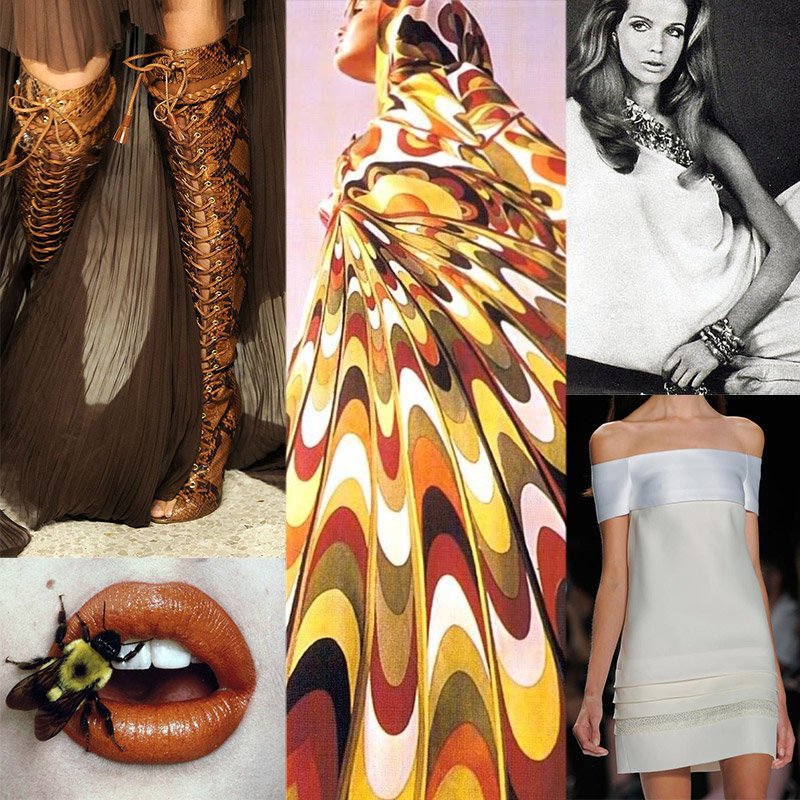Retro/Modern
1940–1980
Retro: 1940–1959
Jewelry from the 1940s and 1950s reflects the austerity of the wartime years and the subsequent booming aftermath. During the frugal forties, platinum and precious gemstones were scarce, resulting in the popularity of semiprecious stones—multi-hued citrines, amethysts, aquamarines and topaz. Although it was officially rationed, gold remained the metal of choice and while lighter in weight, maintained its overall voluminous scale due to careful construction techniques. The resulting massive and bodacious jewels suited the wartime woman’s contemporary masculine attire. The post-war era heralded a return to femininity and frivolity epitomized by Dior’s New Look of 1947. Naturalism, in the form of exotic and opulent flora and fauna, reigned supreme. The iconic panther motif—inspired by The Duchess of Windsor’s three-dimensional panther brooch produced by Cartier—became ubiquitous and remains ever popular today. Diamonds once again returned to the forefront, freshened up with innovative settings combined with calibré-cut rubies and sapphires or juxtaposed with semi-precious stones. The reign of platinum was over and gold—in all shades of white, yellow, rose and green—was king. The leading jewelry houses of the day Van Cleef and Arpels, Tiffany, Cartier, Boucheron and Bulgari were back in black and remain firmly ensconced in the twenty-first century.
Modern: 1960–1980
Welcome to the dawning of the Age of Aquarius, when the social, political and sexual revolutions reverberated throughout all forms of art and design. Jewelry mirrored the abstract forms, vivid colors and asymmetry heralded by the art movements of the swinging sixties. Influenced by op art, abstract expressionism and the shocking fashions of Cardin and Courregès, jewels became more irreverent and avant-garde to better suit the provocative mini skirts and hip huggers of the day.
Overall, nature was transformed into a highly stylized vocabulary of decorative forms expressed in vivid colors. Popular motifs, including sea life, insects, and wild animals were executed in diamonds, emeralds, rubies, turquoise and gold. The vogue for animal jewelry was everywhere: lions at Van Cleef & Arpels, big cats at Cartier, along with David Webb’s extensive menagerie. The iconoclastic designs of Andre Grime epitomized the art jewelers of the era: textured metals and uncut crystals were combined with rough-hewn gemstones to create a dramatic riff on the Art Nouveau designs of the previous century.
Worn with abandon, the jewelry of the seventies combined the pile-it-on rubric of the Victorian era with the intoxicating freedom for each individual to create his or her own personal style. Fashion's deconstructed silhouette with rigorous references to the Victorian era (lace, ruffles and velvets oh my) demanded romantic jewels evocative of India and the Middle East. Yellow gold was flaunted with rock crystal, exotic carved woods, malachite, rose quartz, coral and precious gems to create vivid color schemes and luxurious textures. Twenties-inspired sautoirs of elongated links of coral, rock crystal, lapis lazuli and diamonds with detachable pendants were in their heyday. Wanton is especially smitten with the designs of the seventies, when jewelers melded organic forms with Art Deco and Oriental motifs to create a new language that would eventually herald the emerging Power Woman of the eighties (think Alexis Carrington and Madonna). Opulent statement earrings, geometric collar necklaces and lavish sautoirs of the seventies are now having yet another revival. We say rock on.

